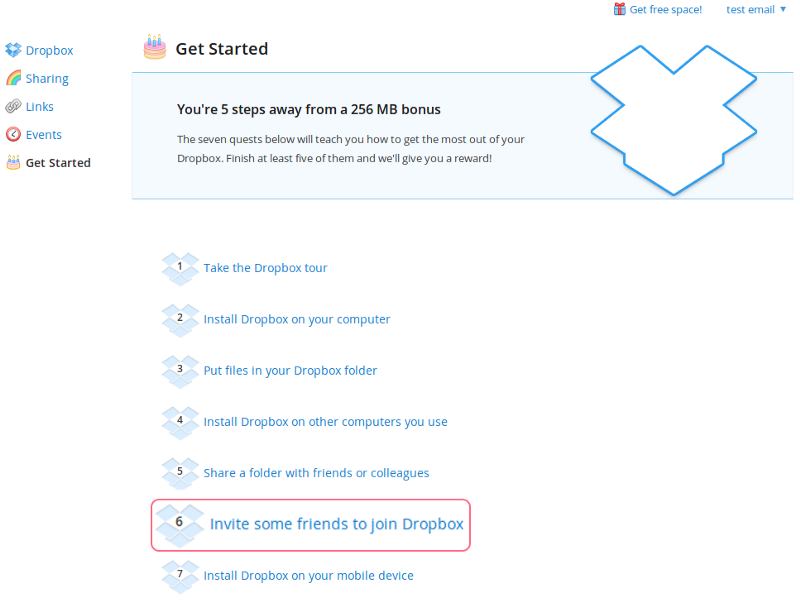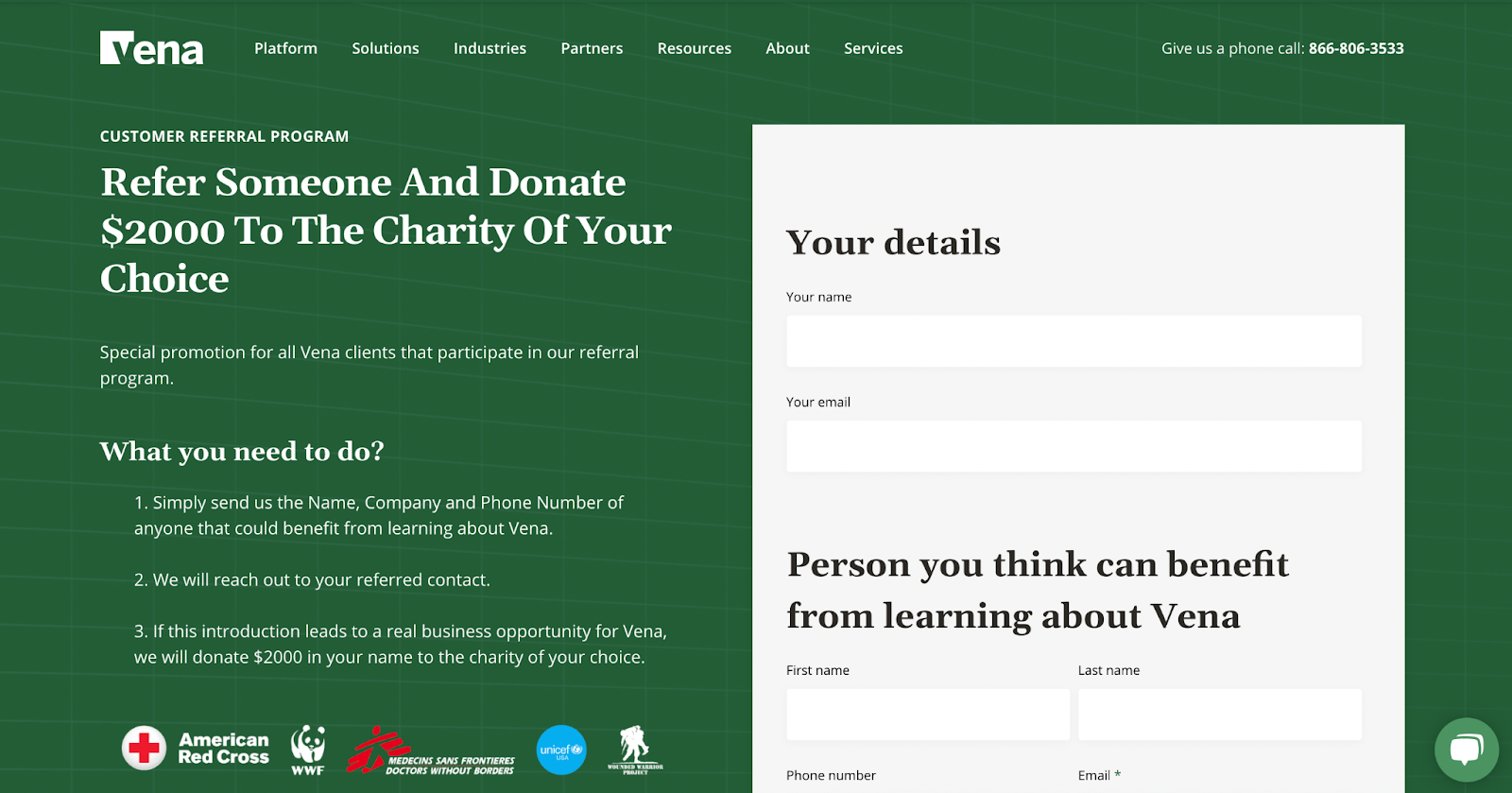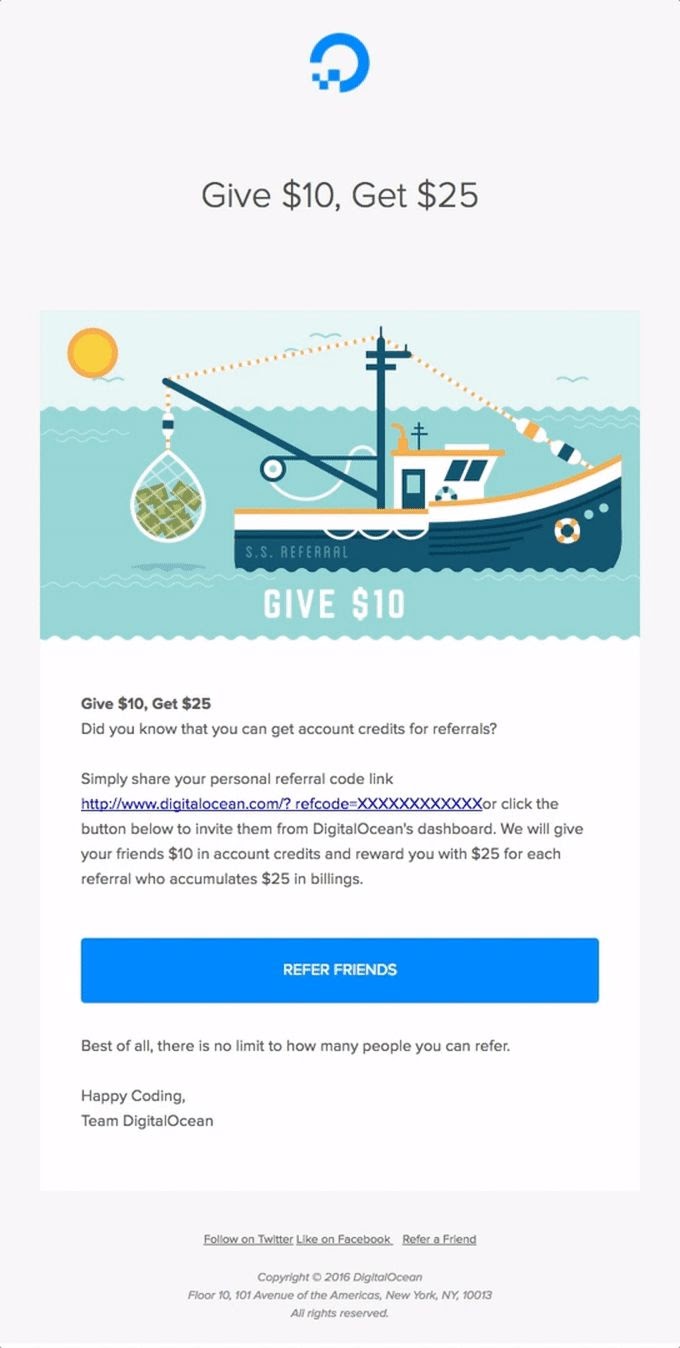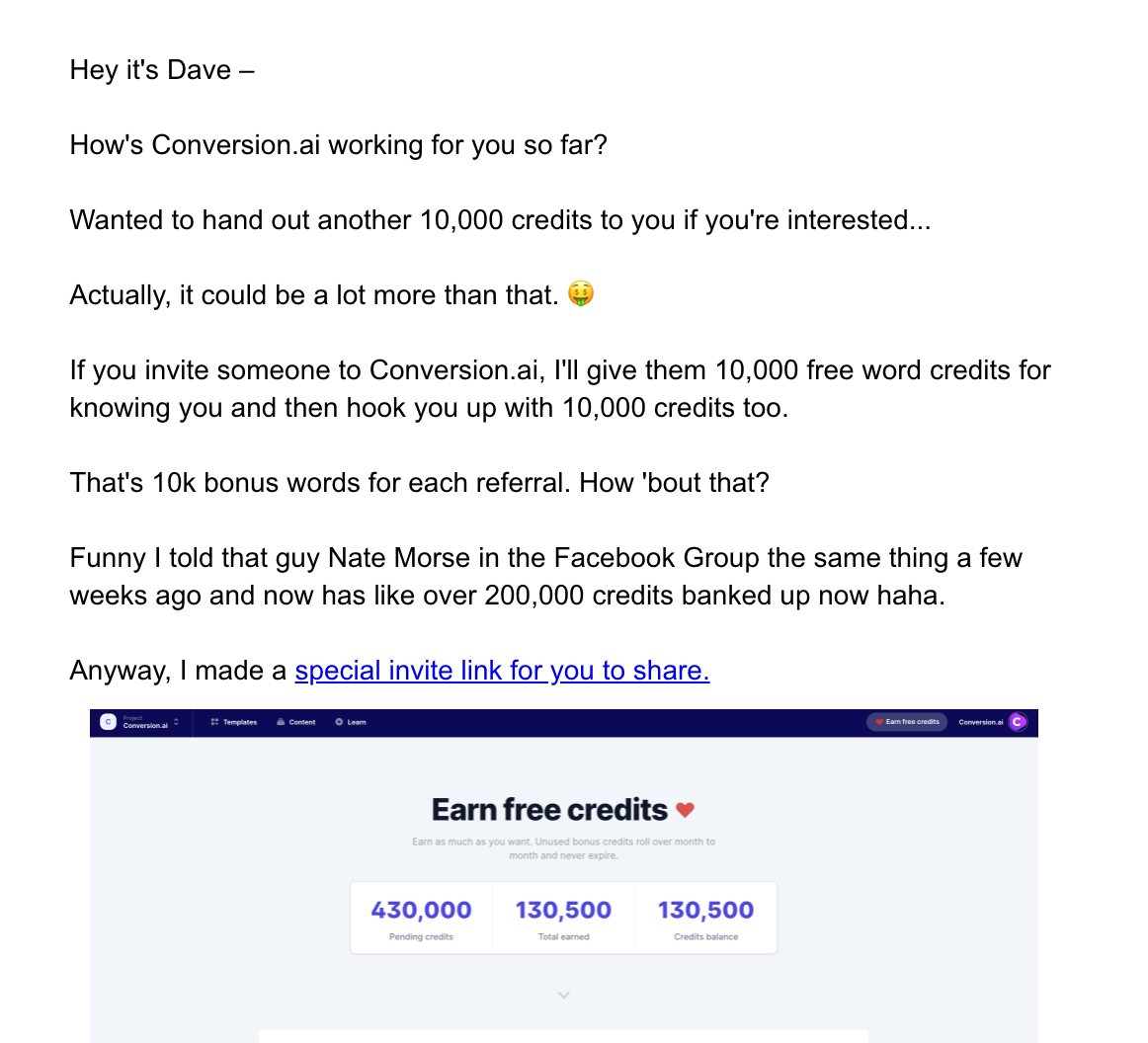Put your growth on autopilot
GrowSurf is modern referral program software that helps product and marketing teams launch an in-product customer referral program in days, not weeks. Start your free trial today.
I know what you may be thinking:
What is a referral rate?
A referral rate is a key performance indicator (KPI) that measures the effectiveness of a referral marketing program. It represents the percentage of total sales or customer acquisitions that can be attributed to referrals from existing customers or advocates.
For example: Let's say that your referral rate is 1%. This means that 1 in every 100 purchases comes from your referral program. It indicates that an advocate shared a referral link with their friend, and their friend clicked on that link and made a purchase. That counts as a successful referral and goes towards your referral rate percentage.
Tracking referral rates is crucial because it provides insights into the effectiveness of your referral marketing efforts and the overall impact on customer acquisition and revenue growth. A higher referral rate generally indicates a successful referral program that is driving valuable word-of-mouth marketing and customer referrals.
At GrowSurf, we've been helping marketing, product, and engineering teams at B2C, FinTech, and SaaS companies run referral programs that yield results. As of April 2024, 2.2 million referrals have been sent through our software, with 6.3 million participants and 12.5 million referral link impressions.
GrowSurf customers get results like these:
However, it's important to note that these figures represent the top-performing customers and may not be indicative of the average results. Referral program performance can vary significantly based on factors such as industry, product or service offerings, target audience, and the overall execution of the referral marketing strategy.
If you're a fast-growing, early-stage startup, a referral marketing software like GrowSurf can be a valuable tool to consider. GrowSurf can provide you with deep visibility into your marketing efforts, including your referral rates, among other stats.
Get this:
The global average referral rate is 2.3%. This means that established businesses can expect an average referral rate of ~2% provided they have been using the referral program for at least six months. By established businesses, we mean businesses that:
If this is your business, then you can expect the sales from your referral program to jump to a minimum of 2% – which is a solid referral rate.
It's important to note that this global average referral rate is based on data from a wide range of industries and businesses. Your specific referral rate may vary depending on factors such as your industry, target audience, product or service offerings, and the overall execution of your referral marketing strategy.
Want to hear something else interesting?
The electronics and gadgets industry has the highest referral rate of 3.4%!
This higher referral rate in the electronics and gadgets industry could be attributed to several factors, such as:
Think about it for a second:
Have you ever bought a gadget just because a friend referred it to you? How many of your tech gadgets at home were actually recommended to you by someone?
Word-of-mouth marketing and personal recommendations play a significant role in the electronics and gadgets industry, where consumers often rely on trusted sources and social proof before making purchasing decisions. This highlights the importance of cultivating a strong referral program and leveraging the power of customer advocacy in this industry.
Additionally, the electronics and gadgets industry often involves higher-priced products, which can make referral incentives and rewards more appealing to both advocates and referred customers. This, combined with the strong brand loyalty and advocacy among tech enthusiasts, can contribute to the higher referral rates observed in this industry.

Let's imagine the following scenario:
A few months ago, you implemented your referral program, started offering cash rewards to early adopters, and promoted the program across your social media accounts.
Despite your best efforts, you seem to be stuck at a 1% referral rate.
You start to worry that your referral program in which you invested so much time and effort will be a complete failure.
However, it's important to note that building a successful referral program takes time and consistent effort. A 1% referral rate is not necessarily a failure, especially in the early stages of your program. Many factors can influence referral rates, such as the effectiveness of your incentives, the quality of your promotions, and the overall engagement of your customer base.
Good news:
There are some things you can do to improve your referral rate and get it to 2% – which is considered a solid referral rate for any industry.
Here are seven ways how:
First thing first:
A target market is a group of people identified as most likely to become customers of a business.
But why should you care about doing target market research?
Conducting thorough target market research is crucial for understanding your ideal customer's needs, preferences, and behaviors. This knowledge can then inform the design and execution of your referral program, ensuring that your incentives, messaging, and promotions resonate effectively with your target audience.
Additionally, target market research can help you identify the most effective referral incentives and rewards for your specific audience. By understanding their preferences, pain points, and motivations, you can design a referral program that resonates with them and encourages higher participation and engagement.
Some of the best ways to conduct target market research include:

The best thing you can do to ensure your program gets the popularity it deserves is to tell your customers about it.
However, simply informing your customers about your referral program may not be enough. Effective promotion requires a multi-channel approach tailored to your target audience's preferences and behaviors.
Some effective promotion channels to consider include:
From social media marketing and brand ambassadors to landing pages and email automation, the possibilities for promoting your referral program are endless!
However, it's important to note that effective promotion requires a strategic and consistent approach. Simply utilizing multiple channels without a cohesive strategy and clear messaging may not yield the desired results.
Additionally, it's crucial to continuously monitor and analyze the performance of your promotion efforts across different channels, and adjust your strategy accordingly. This data-driven approach can help you optimize your promotion efforts and maximize the impact of your referral program.
What do you think lies behind Dropbox's successful referral program?
You guessed it right: it's a good promotion. Dropbox integrated its referral program in the onboarding process as the last step. The end result? A 3900% growth in 15 months!
Luckily, there are many effective ways to promote your referral program and potentially achieve the same success as Dropbox.
For instance, you can:

Choosing the right rewards for your business can be tricky.
For one thing, the best referral program rewards for your business depend on a range of factors, including your target audience, your goals, marketing tactics, and your budget.
To give you an idea about what types of rewards are right for your referral program, let’s take a look at the most common ones:

When you have a referral program, email is one of the best distribution channels to support it – especially when you want to let your customers know about the rewards they can earn.
At first, crafting a good referral email can seem challenging, but the good news is that the most successful email consists of several elements that can help it stand out.
Here are some of them:

Imagine this scenario:
The customer has just made a purchase. They trust your brand and are convinced that your product is going to solve their problems.
What better time to send them an email informing them of your referral program?
Most referral program software come with pre-made email templates that you can use to invite your customers to join your referral program.
Apart from email, you can also promote your referral program in the following places:

Your best customers are your best asset. Think about it: they're not only buying your product/service, but they're also more than happy to recommend you to their friends and family.
So why not go the extra mile and remind your most loyal fans about your referral program? Customers who have bought several times from you are very likely to be strong advocates for your brand.
The good news is that most referral marketing software let you upload your list of customers and send them an invitation to join your referral program. Easy-peasy, am I right?
Another great idea is to reward your best customers. By doing so, you're not only showing your appreciation, but you're also motivating them to keep spreading the good word.
For example, consider sending your most loyal customers a branded gift or a gift card to show them how much you appreciate their referrals.

Here's the hard truth:
Without a referral program software that manages referrals and tracks customer retention, improving your referral rate is simply unachievable.
Here are five reasons why you should invest in a referral management software:
We reached the end of the post. Hopefully, you now have a clearer idea of what referral rates are and what's a good referral rate for your industry.
A final tip: high referral rates aren't the only thing you need to invest in. A high referral rate is good to have but in no case should you rely solely on your referral program to get new customers and generate sales. Make sure you diversify your customer acquisition channels so that the other ones come to the rescue if one channel fails.
To sum up briefly:

GrowSurf is modern referral program software that helps product and marketing teams launch an in-product customer referral program in days, not weeks. Start your free trial today.
When entering a new field, jargon can be a scary thing. Lucky for you, we gathered up all the most important referral marketing definitions for you.
The Reciprocity Principle, otherwise known as the Norm of Reciprocity, leans heavily on the most natural of human instincts.
While referral programs are an effective way to promote your products and services, they’re not always easy to optimize. Here are 4 powerful ways to optimize your referral program.